With Displacement / Exhibition of Not Only Domestic Antiquities – Filip Rybkowski

Humpty Dumpty sat on a wall,
Humpty Dumpty had a great fall;
All the king’s horses and all the king’s men
Couldn’t put Humpty together again.[1]
If I were to point out the sentence which I can use to enter the world of Filip Rybkowski’s imagination, it would be this old English rhyme. The artist has been busy transforming various „antique” remnants into new compositions for some time now, thus „old” as a descriptive tag seems to fit his art well.
In the rhyme above, there is also an image of a very specific catastrophe, shattering into pieces and an attempt to reassemble someone / something back together again. On a level of creative practice, it is a gesture of reconstruction which he constantly repeats, of fitting together fragments that are not necessarily contiguous. Despite an effort, there is also the futility of trying in it, as the reconstruction is never absolutely perfect. There is also a sense of humour, as it happens that the whole work is put, as it is a rhyme, into the reconstruction of a broken egg. Respective objects created by an artist work similarly to these concise phrases, demanding an unpacking (or putting together), solving of a riddle or identification of scattered elements. This is an art which takes seriously the topic of constructing representations, subjecting them to analysis. It is also firmly anchored in the theory of image and visuality studies. It draws from various areas of knowledge (medicine, archeology, history of art), quotes, and creates copies, sometimes significantly transforming originals. It knows that the process of assembling an image begins with the physical perception, but our cultural preconditions process it heavily in our minds. It knows that the matter of images touches not only upon aesthetics, but often involves violence, as representation means also giving form which is convenient to our aims.

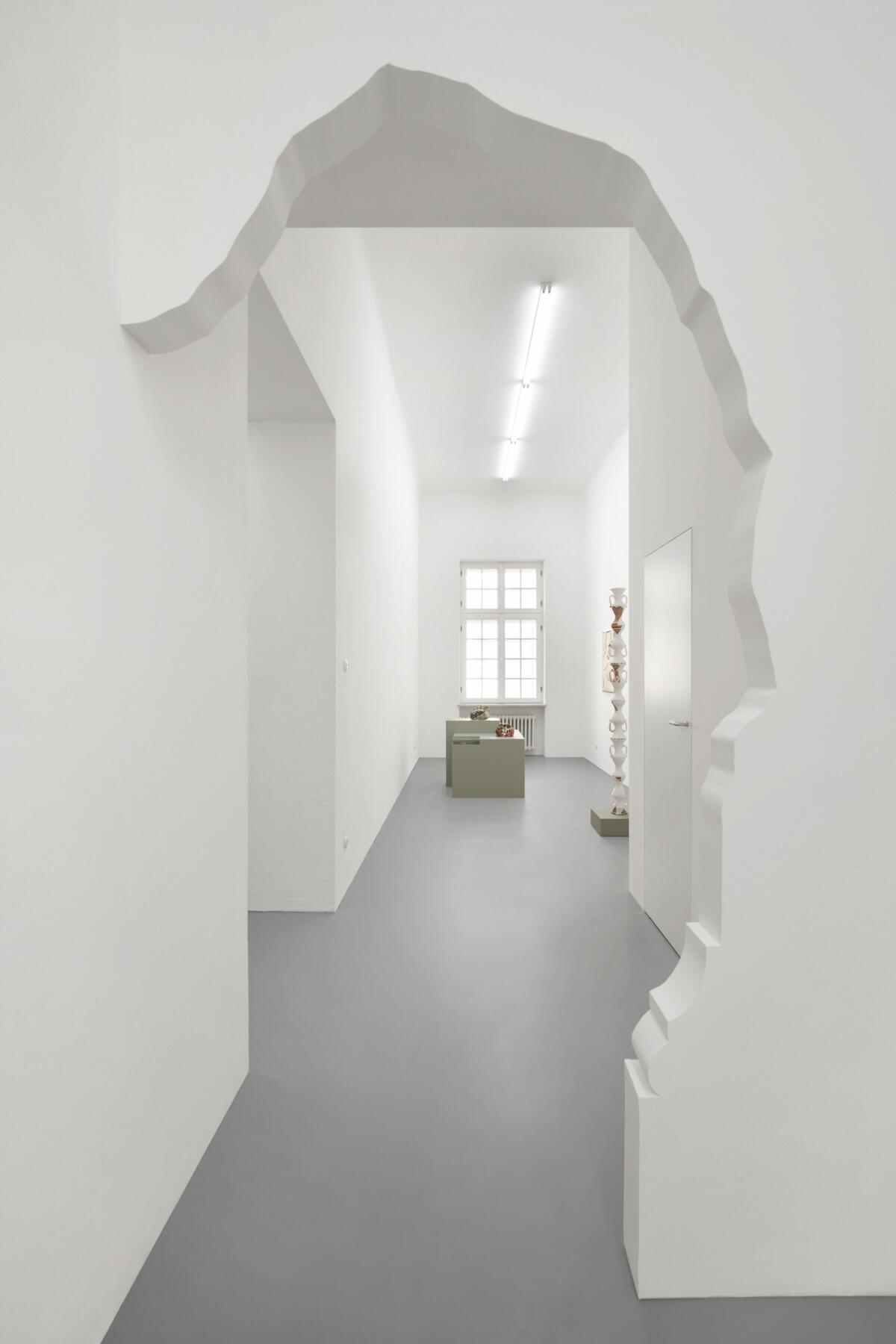
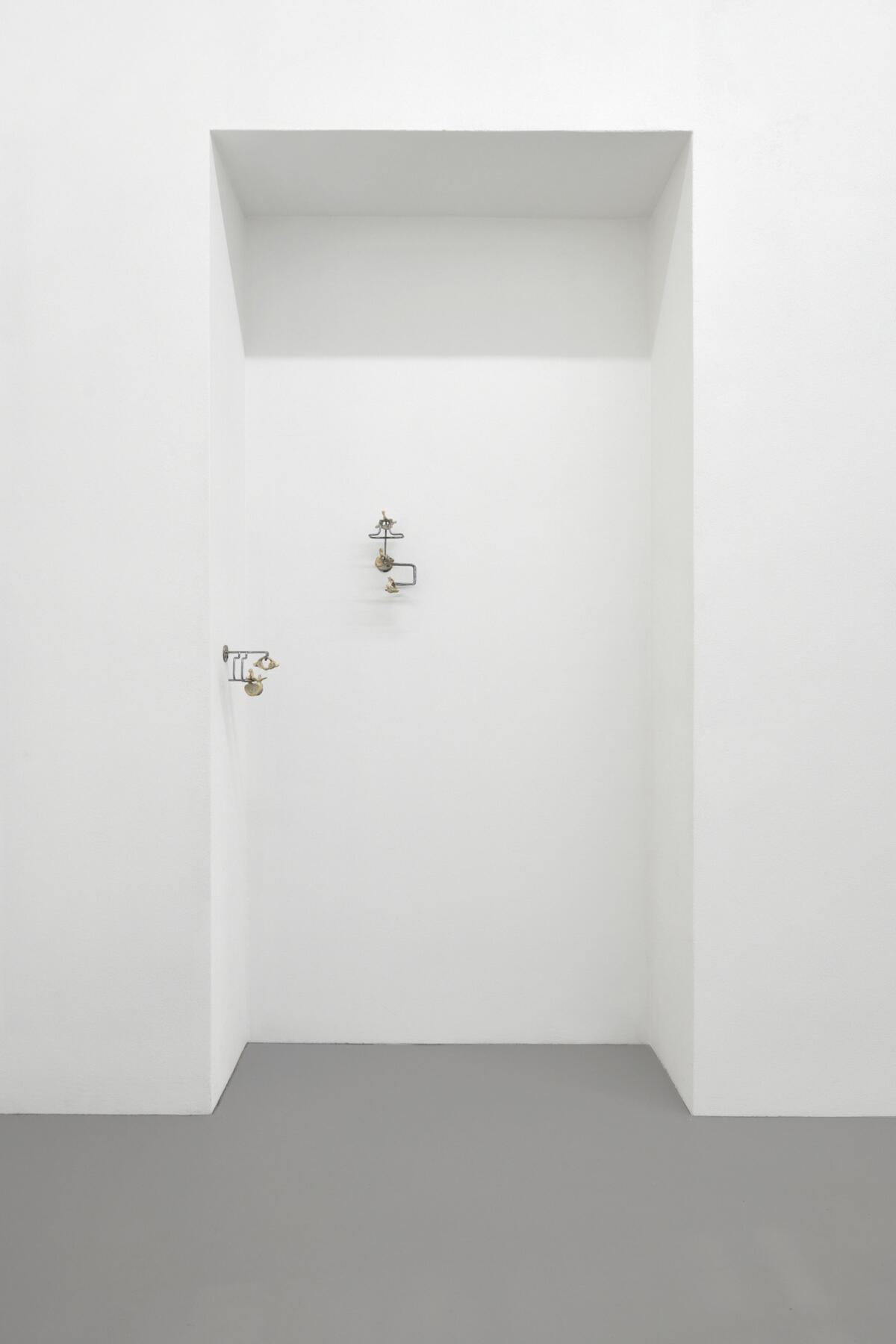
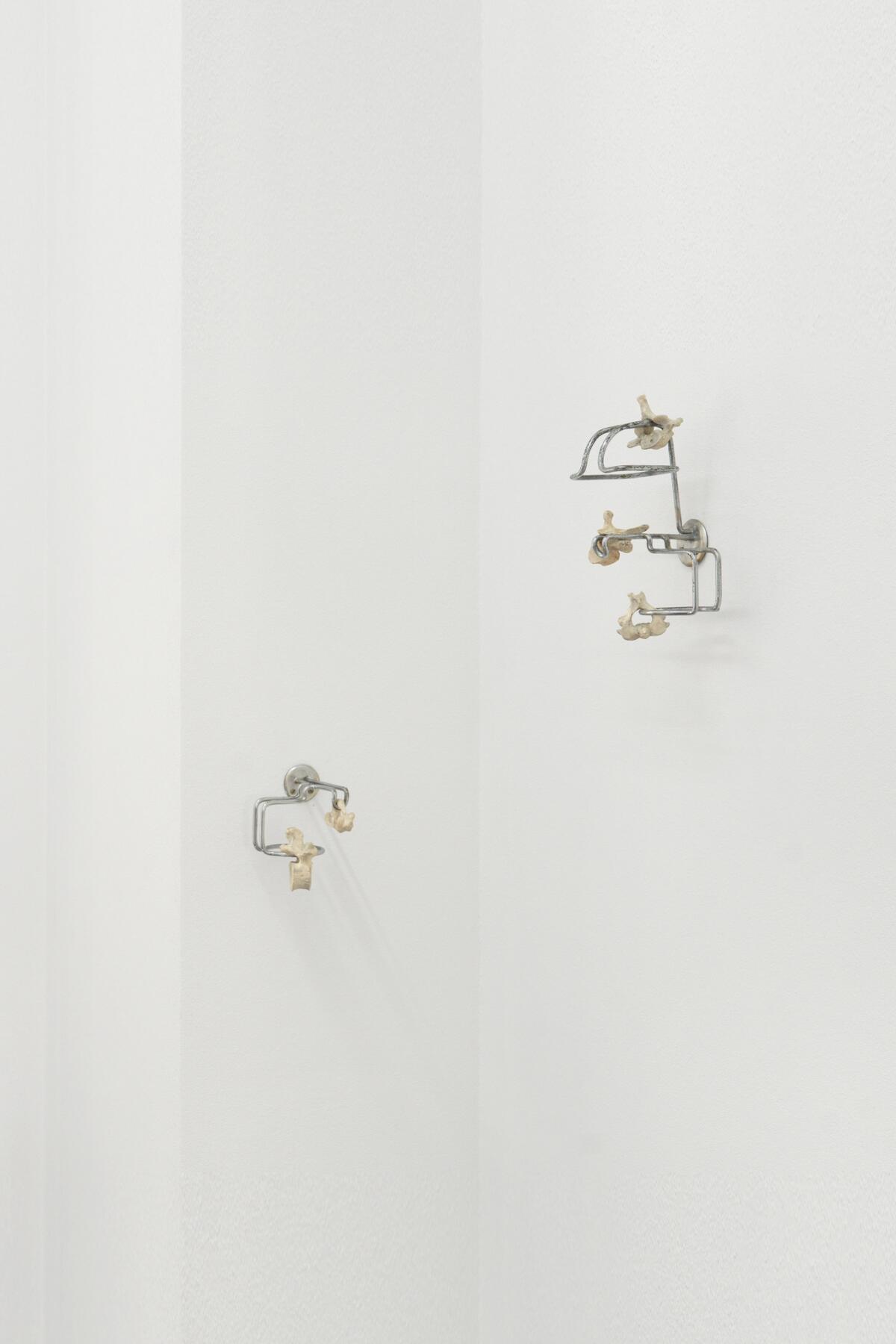
As in the overused phrase about meeting of an umbrella and a sewing machine on a dissecting table, also here the combination of disparate elements of different orders generates new quality. Collage is not only a formal gesture, but a restorative practice aiming to reconstruct some degree of wholeness out of displaced elements. If it is employed to a work of art or a monument, it is tasked with keeping that object ouf of time. The artist questions it as contradictory with the state things are in, because it is being practiced somewhat against their nature which seeks change and destruction. Simultaneously, artist himself repeats the reparative gesture, while assembling illusions and copies, translocating meaning from an object to restoration process in itself.
Thinking in and through images, we can say that this work originates from a combination of a conservator’s workshop, where elements are subjected to reconstruction in the name of preserving them, with a rock cave where the processes of rocks dissolving and their time-stretched entropy does not allow us to forget about change. Tension between yearning to preserve, which expresses itself through reconstruction and recording, and a disintegration is one of the frequent qualities present in many of Rybkowski’s works. After all, as Hans Belting somewhat loftily wrote in An Anthropology of Images, the beginnings of imaging mark the beginnings of relationship between image and memory and death. Fortunately, artist offers us a helping hand, taking us from these heights to a very mundane kind of materiality, usually by means of plasterboard, plywood or silicone. Plaster, putty work and cracked walls are reimagined in his painterly objects with the aforementioned conservator’s care. Using them, he builds illusions and apparitions that can be obtained on a flat surface, allowing our eyes to pass between the representation (quotes from art history often appear in this function) and an imitation of a tiled wall. These compositions are horizontal, in the sense that building grids, references to Classicist painting, as well as found elements used in their construction, are of equal relevance.
It happens that the imitative capability is employed in order to spoof nobler materials by means of cheaper ones, to create the impression of a marble surface and plaster dust-covered nobility. However, it is not a way of criticising imitation, but rather an analysis of our desire to use art in such a seductive way.
We can say that this „aged” art concerns our fantasy about reconstructing the past. It distinctly reveals the constructed nature of the narrative of history, where fantasy plays such a prominent role. It allows us to construct our imaginings of how it could be, bring new species to life on the basis of jumbled vestiges, retain our faith in knowing something for sure when we hold a material artefact from a bygone era in our hands.
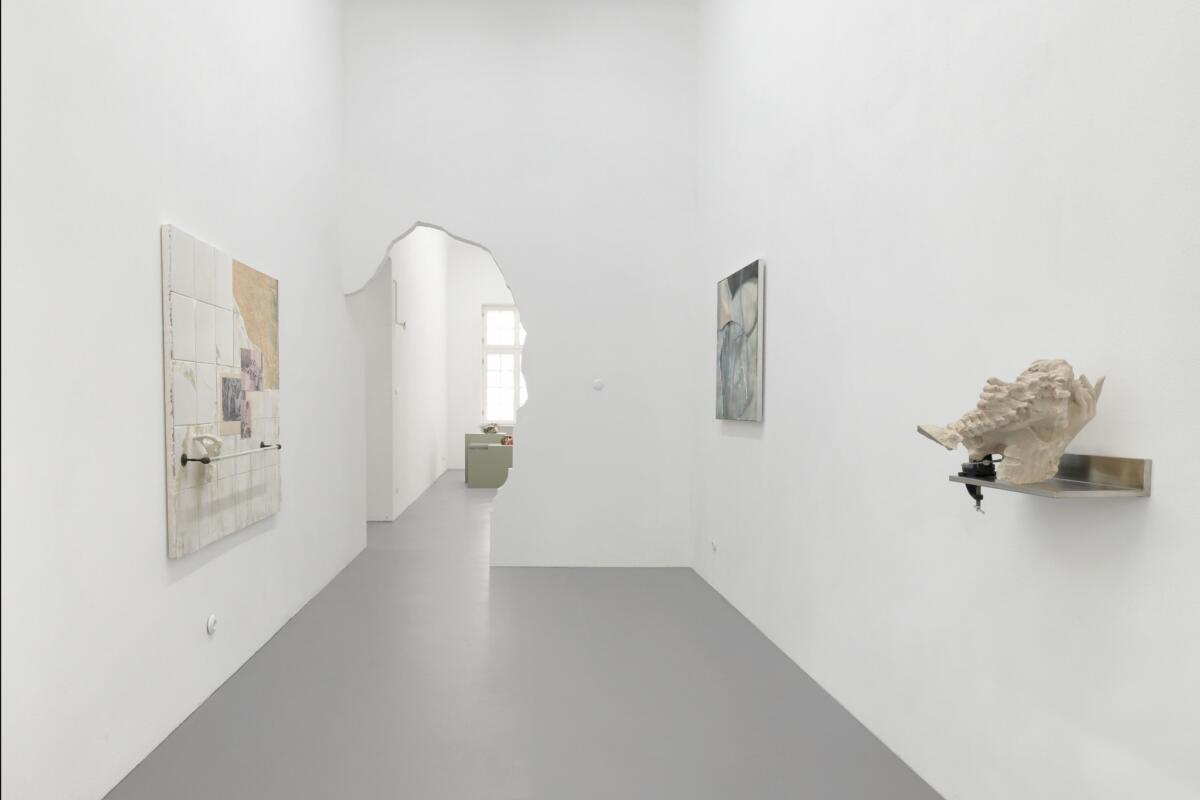
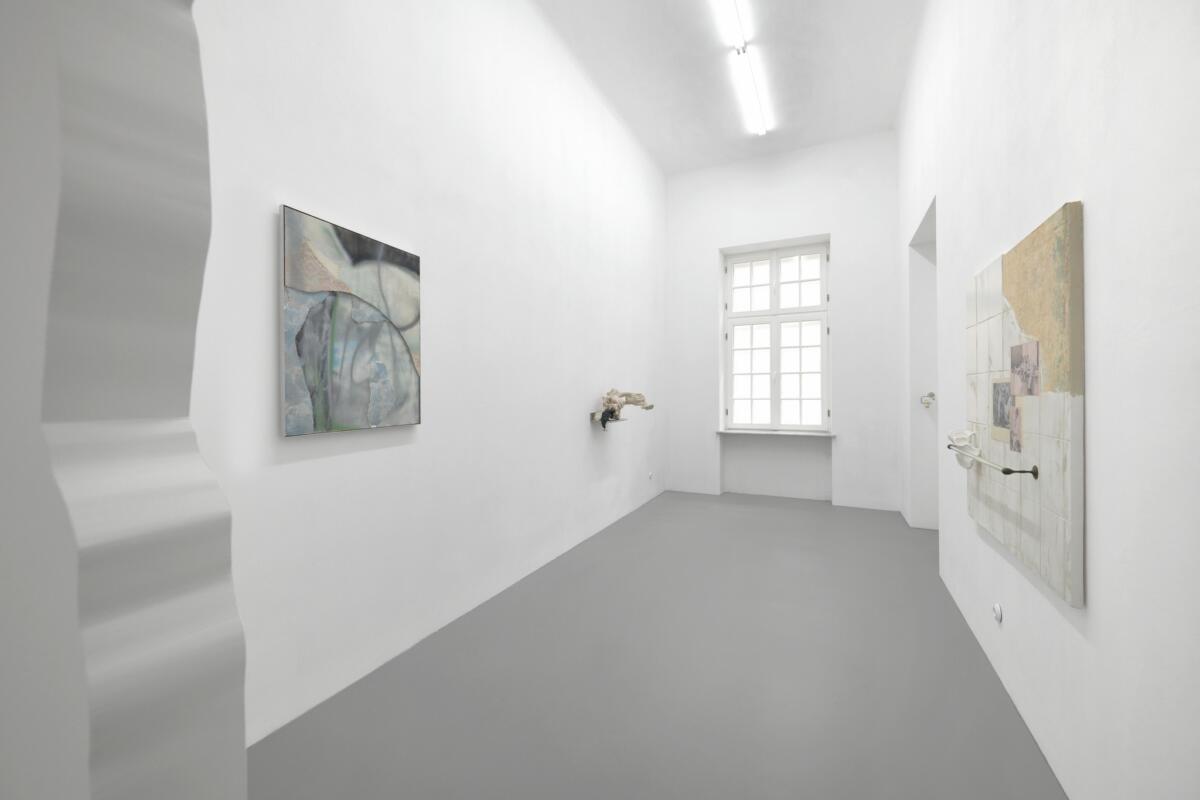
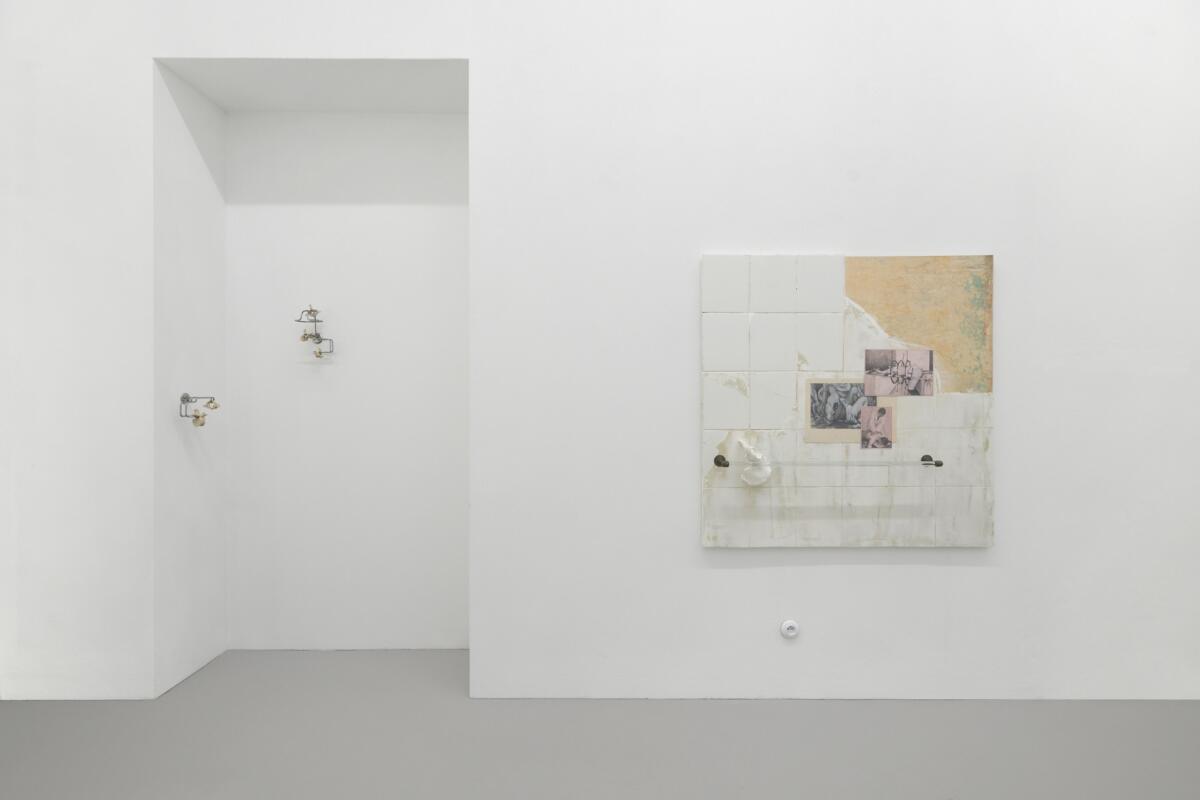
One of our conversations began with a reminiscence of the Exhibition of Domestic Antiquities, shows held in 1856 and 1858 in Warsaw and Cracow among others, which grouped together pre-Christian artefacts, patriotic memorabilia and „weapons and armaments”. Karol Beyer’s album that has been made on this occasion consisted of a series of photographs reproducing whole arrangements of objects, items translocated from different times and spheres of functioning, meeting together in an exhibition reconstructing vision of the past by means of collage.
This meeting point between science and imagination, moment of transition of one into the other, is another path that allows me to enter the world of contexts and forms produced by an artist. It happens that in the edges, in spots where two of them meet, gap that demands to be filled appears. Possibly, it might be the proper place where this art is located. Creating a meaningful ornament out of this meeting point, trace of fitting both of them together after an attempt to reconstruct the whole.
In Rybkowski’s oeuvre, history assembled in various ways is exchanged into situations where the body also gets assembled and reconstructed. As such, it is the subject of artist’s interest when he engages into the preparation of such works as Study of Residue (Contrapposto) and Study of Residue (Figure). It then undergoes transformations and, out from its ordinary human form, morphs into something resemblimg rock formations, stalactites and stalagmites formed in a slow process of erosion. This expression of chalky rock is made possible due to its softness, which it owes to its point of origin. Built upon the bones and organic remnants, it is itself the effect of transformation of once living organisms into an inanimate matter.

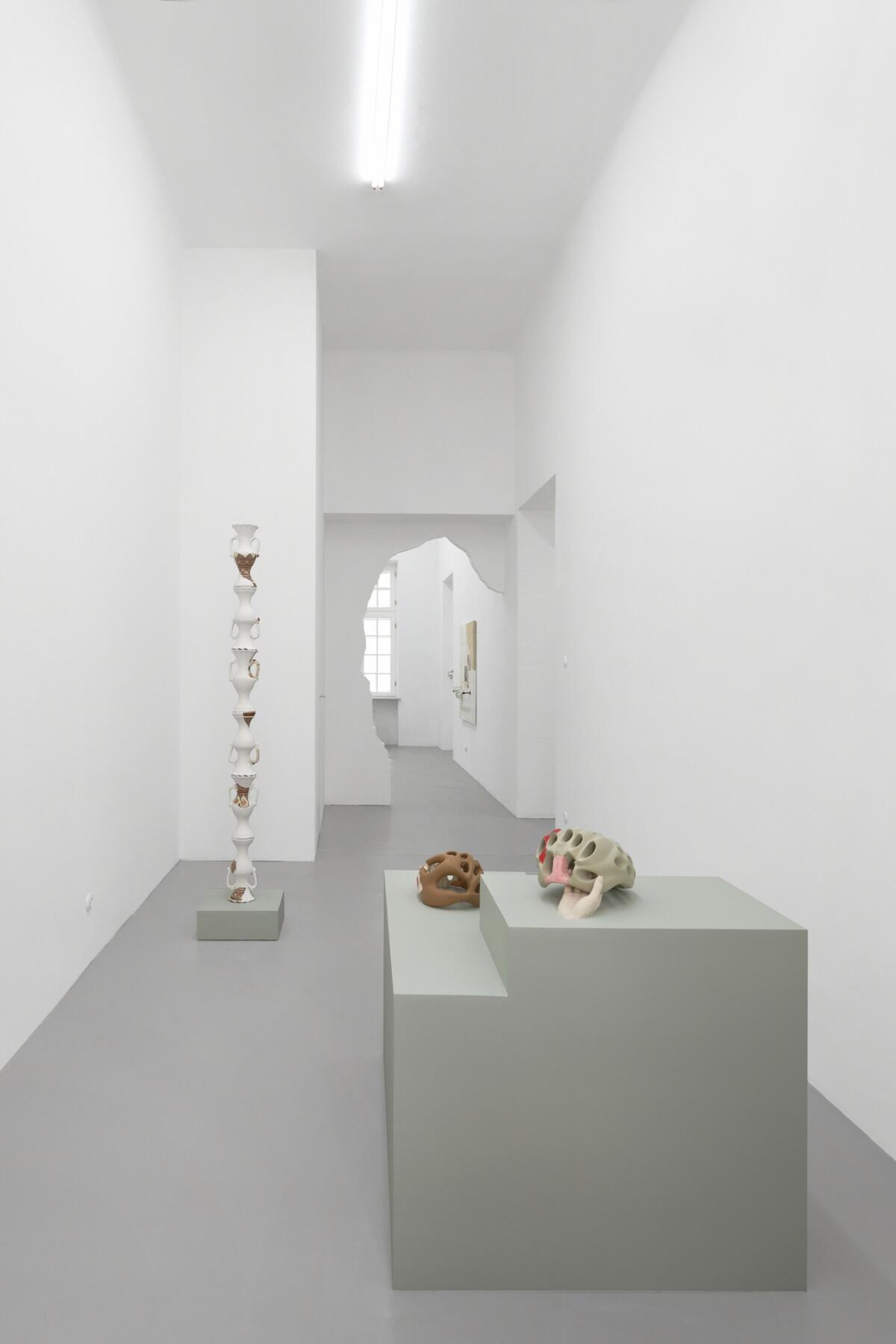
At other times, assembly concerns objects that are close to the body, whose disintegration is a recording of a specific catastrophe, an event through which we are able to appreciate their protective function. This procedure takes place in the series of works entitled Accident Study.
Reconstruction does not so much restore primary functionality to the objects, as it rather exposes the experience of its loss, while repositioning is a form of accentuation of the resulting cracks and deficiences by filling them in. Helmet treated as a matter subjected to collage technique through collision or fall emphasizes the fact that for the process of glueing pieces together, a process of disintegration must first take place.
It happens that displacement encourages preservation of something in a good shape, especially when it removes the object from its colloquial reality and places it in a museum, protecting it against the forces of disintegration. In this sense, displacement is fundamental for the creation of the institution of museum. It can also happen in the contrary direction, where it is a destructive force smashing the object or a person. Overtly medical connotations of the term „with displacement”, which is of interest to the artist, are obvious, when they are applied to the bones, skeleton or correct bodily posture. It is possible to see yet another shade of reconstruction when we think of these procedures as operations on the social body. Then it is exactly the images, visual quotations, matter intercepted from history, that serves as a tool for fitting the correct vision of contemporaneity. They may sometimes serve as a direct argument in a competition for being right, as it has been shown in the work called Great Battle of the Doves For the Last Olive Branch. Having a set of visualities at one’s disposal, and for concrete purposes – this might be the descriptive definition of a pictorial propaganda, which has many times assisted in the colonial appropriation of the concrete areas.

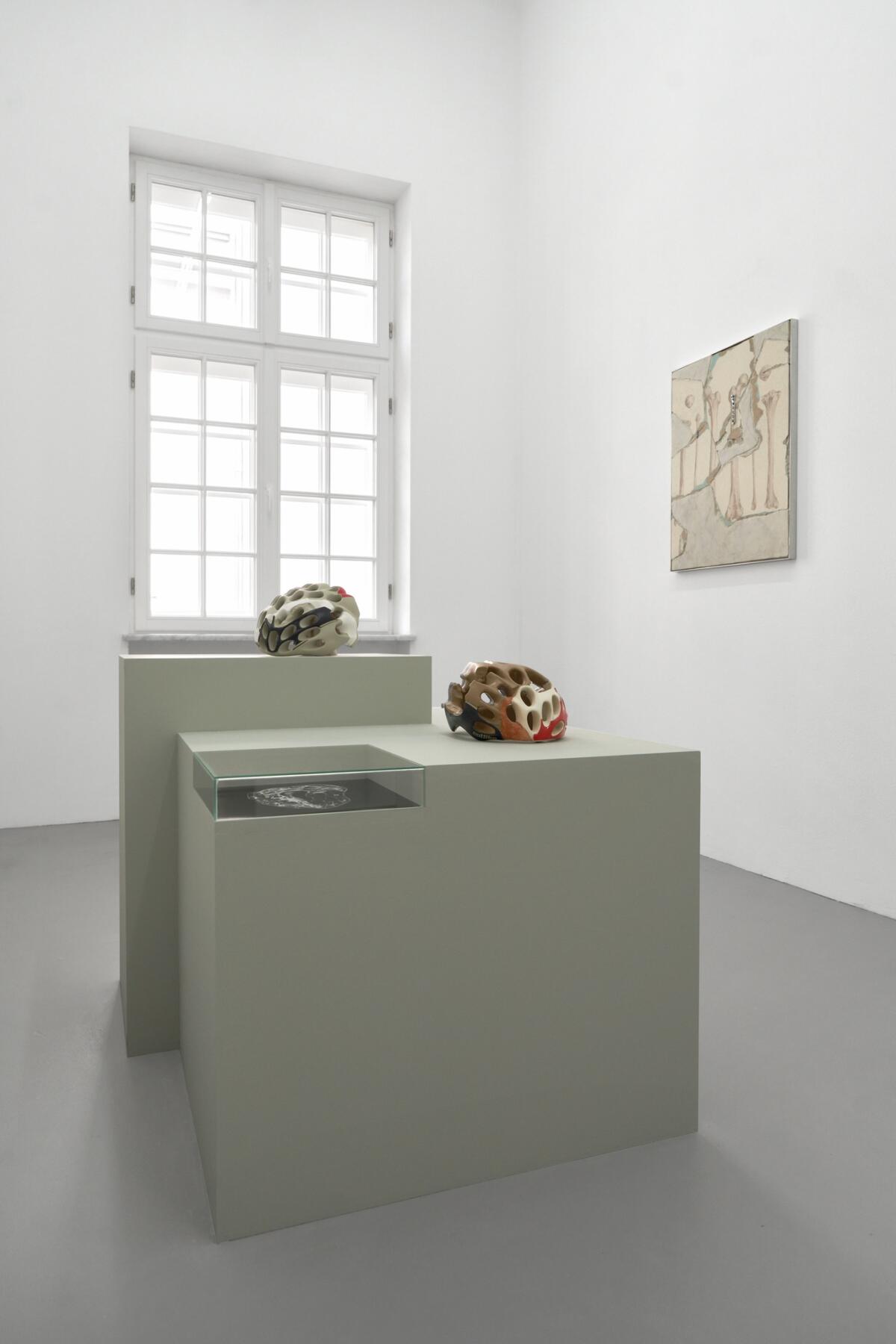
Pictorial artefacts, as well as those entirely tangible ones, are substrates that find their application in the context of historical politics, specific ideologies designed to confirm the circulating versions of memory, thus indicating what the present condition should be. After all, the creators of national antiquities exhibitions were also aware that the spirit of patriotism grows well on the material past. It is also possible to feed other and worse demons with it. Coming back to exhibition institutions, displacement to museum as a means for protecting the legacy can prove to be an appropriation, and it often happens to be close to physical violence.
Locating the discourse close to the body again, if bone transforms into chalk, it can well transform into a titanium, which will restore the displaced elements to their correct positions. The motif of the hand, which artist uses, points our attention to the very gesture of reconstruction, making an active effort to endow the body with correct form and posture. However, as it happens, repair can be close to tearing apart, for in order for something to be repaired it must be broken in the first place.
Hence, it is not wholly clear whether hands twisting the spine – in a work called Posture Study – put dislocated discs in their respective places, or whether they destroy the structure on which the body is stretched. Process of assembling someone together can be not as much a medical rehabilitation as total correction of his posture. From this point of view, assembling into a whole, especially while done with the hands of state or nation, can be extremely ambiguous and dangerously close to the breaking of one’s moral spine. This premonition, that not only the disassembly but also reconstruction used in the correction of the social body can be violent, gives proper value to artist’s aesthetic explorations.


Filip Rybkowski’s (b. 1991) practice is based on painting, installation, video and photography. His works transcend the traditional boundaries of painting, entering the field of mosaic, objet trouvé and installation. Rybkowski combines the poetics of the fragment, juxtaposing original artefacts with reconstructions and images. He is interested in the problematic status of “authenticity” and the processes of a historical construction of memory. In his most recent projects, his basic tool is the critical act of reconstruction combined with reflection on the political nature of the gesture of restoration, preservation and conservation. He is a co-founder of the Piana Foundation and Piana Gallery, which support and promote young artists.
[1]An old rhyme that most English-speaking children supposedly know.
Imprint
| Artist | Filip Rybkowski |
| Exhibition | With Displacement |
| Place / venue | wanda gallery |
| Dates | 26.05 - 1.07.2023 |
| Photos | Bartek Zalewski |
| Website | wandagallery.pl/ |
| Index | Bartek Zalewski Filip Rybkowski Szymon Maliborski wanda gallery |
